Variation: Lactose-Free or Kosher Pastry Cream; Chocolate Thick Pastry Cream; Coconut Pastry Cream; Easy Pineapple or Any Flavor Pastry Cream Filling; Pomegranate Pastry Cream; Vanilla Bean Pastry Cream
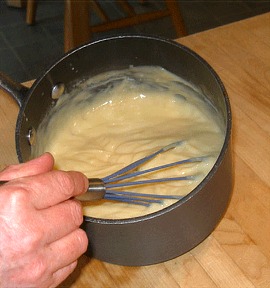
Pastry cream or crème patissière is a staple in pastry kitchens and originated in France and is called the “Mother of all creams!” Pastry Cream a rich, thick stirred custard, cooked on the stove, made from a mixture of milk or cream, eggs, sugar, flour (roux) and/or cornstarch. This versatile cream is used to fill cream puffs, such as with our Croquembouche, éclairs, Napoléons, tarts, such as our Easy Breezy Strawberry Cream Tart and other pastries. It is spread in between cake layers, or used to fill our Boston Cream Pie Cupcakes, and as a base for endless recipes.
CUSTARD RECIPE HELP
This recipe is used in the:
Princess Cream Cake Tutorial
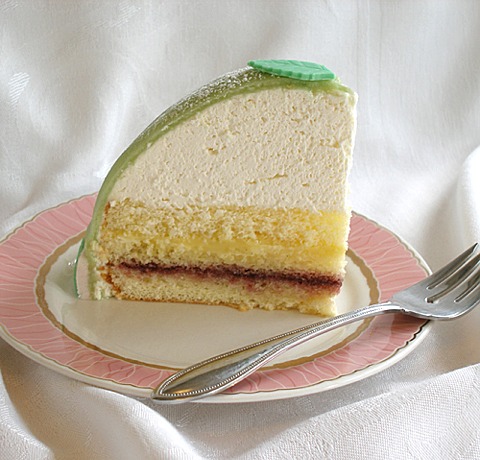
Vol-au-Valentines Tutorial
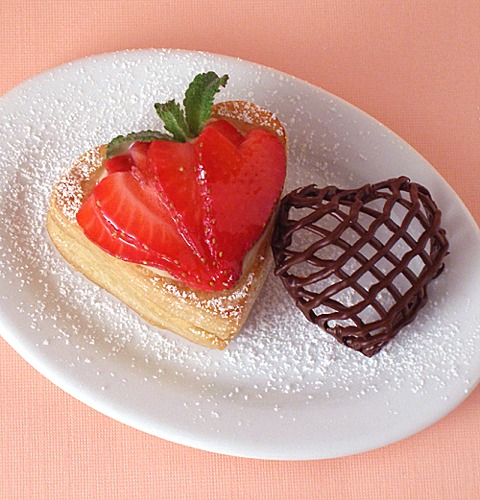
INGREDIENTS
cornstarch: 1/4 cup / 1.05 ounces / 30 grams
sugar: 3/4 cup / 5.25 ounces / 150 grams
whole or 2% milk: 2 liquid cups / 17 ounces / 484 ounces
egg yolks, lightly beaten: 4 large / 2.6 ounces / 74.4 grams
salt: 1/4 teaspoon / 1.5 grams
vanilla extract: 2 teaspoons / 8 grams or any flavored extract or 1/4 teaspoon flavored oil or 2 teaspoons citrus peel
unsalted butter: 2 tablespoons / 1 ounce / 28.38 grams
KELLY SAYS: When I separate the whites from yolks, I find it easier just to do this with clean hands.
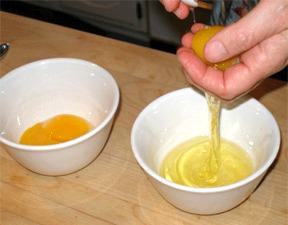
INSTRUCTIONS
1. Prepare an ice-water bath by filling a roasting pan or large mixing bowl half full with water and ice; reserve for later use.
2. In a large size bowl, combine the cornstarch with 1/4 cup of the sugar in a mixing bowl.
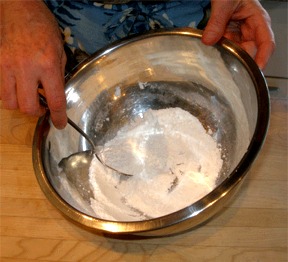
3. Stir in 1/2 cup of the milk. Then, with a wire whisk, blend the yolks into the cornstarch mixture, until smooth.
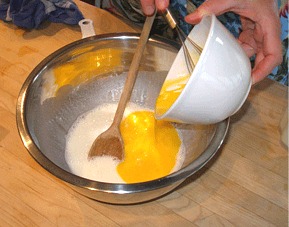
4. In a medium size heavy-bottomed saucepan, combine the remaining 1 1/2 cups milk with the remaining 1/2 cup sugar and the salt. Cook over medium heat and bring to a boil while stirring to prevent the mixture from burning. Remove pan from heat and let it cool slightly.
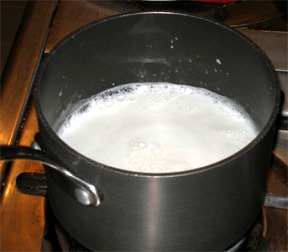
5. Temper the egg yolk mixture so the eggs won't cook or curdle:
First dribble a small amount of hot milk in a steady stream into the egg yolk mixture while quickly whisking the two together.
Continue to dribble about 1/3 of the hot milk mixture to the egg yolk mixture in the mixing bowl, whisking constantly.
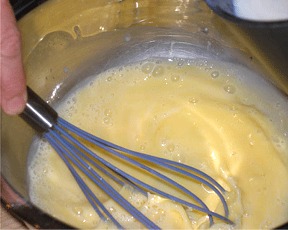
Add the remaining milk mixture to the egg yolk mixture, whisking constantly.
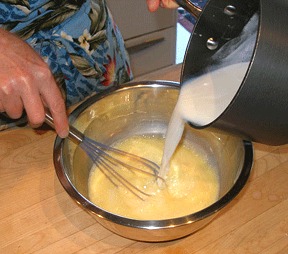
Return the mixture back to the saucepan.
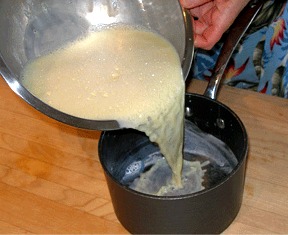
6. Turn on the heat to medium and continue cooking, vigorously stirring with a whisk, until the mixture comes to a boil and the whisk leaves a trail in the pastry cream, taking about 5 to 7 minutes.
SARAH SAYS: Doing so sets the eggs and activates the starch, thereby ensuring a proper consistency.
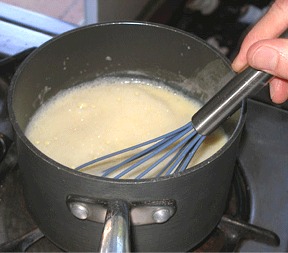

7. Remove from heat. Then stir in vanilla extract and butter.
8. Transfer the pan to the ice water bath, stirring occasionally, until the pastry cream is cool, about 30 minutes.
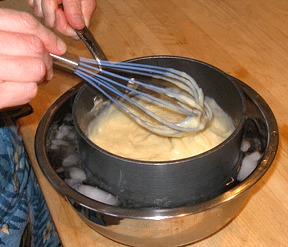
9. When almost cooled, strain pastry cream through a fine mesh strainer into a bowl.
10. Place plastic wrap directly on the surface, to prevent a skin from forming. Refrigerate until needed.
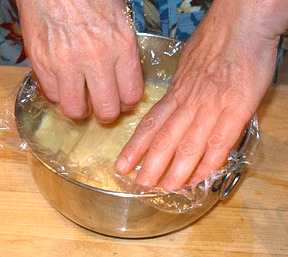
STORAGE
Transfer the pastry cream to a covered storage container and refrigerate for up to 3 days. Pour off excess liquid that forms on top and then stir before using. Does not freeze.
VARIATIONS
Lactose-Free or Kosher Pastry Cream
Substitute the milk with unsweetened soy milk or Lactaid 2%, one for one.
Substitute the butter with Earth Balance Soy Buttery Sticks or Soy Garden Buttery Spread in the tub
SARAH SAYS: Watch the heat more carefully because soy milk tends to boil over more readily than milk does.
Chocolate Thick Pastry Cream
Coconut Pastry Cream
Easy Pineapple or Any Flavor Pastry Cream Filling
Pomegranate Pastry Cream
Vanilla Bean Pastry Cream


